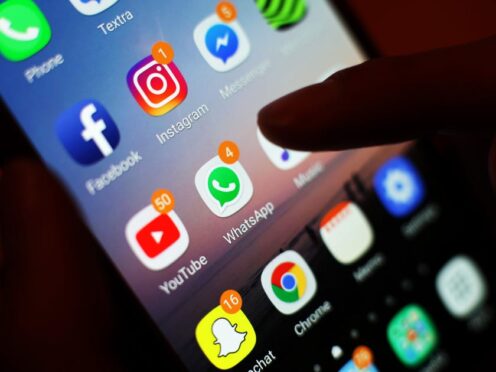
Headteachers should make sure pupils hand in or lock up their phones at the start of each day as an “effective ban” may have a positive impact on a school’s performance, a report has suggested.
Criticism from parents, children or campaigners should not deter school staff from consistently enforcing mobile phone bans, according to a paper by centre-right think tank Policy Exchange.
An effective phone ban offers “potential benefits” for school performance and pupil attainment, as well as children’s wellbeing, the report said.
It comes after schools in England were given Government guidance in February intended to stop the use of mobile phones during break and lunch periods in schools, as well as in lessons.
Policy Exchange sent freedom of information requests to 800 primary and secondary schools in the UK in December – and 407 schools responded, either fully or in part, to the questions asked about mobile phone policies.
The investigation suggested that only 11% of secondary schools had an “effective ban” on mobile phones in place – where they were not allowed on the site or were stored away in lockers at the start of the school day.
More than half (52%) said they banned phones during the school day but they were kept with the student, and 36% had a “partial ban” – where phones were banned in some places but allowed in others.
An analysis – which looked at the responses from 162 secondary schools in England – suggested a “clear correlation” between an effective phone ban and better school performance.
The think tank found that secondary schools in England with an “effective ban” were more than twice as likely to be rated outstanding by Ofsted as the national average.
Children at schools in England with an effective ban achieved GCSE results that were one to two grades higher compared with children at schools with “laxer policies”, the study suggested.
Earlier this year, Education Secretary Gillian Keegan said non-statutory Government guidance on banning phones in schools would provide “clarity and consistency” for teachers as she said there was “a large variation in how different schools are managing the use of mobile phones”.
The Policy Exchange paper has called on the Government to carefully monitor whether or not schools are implementing effective bans on phones, and it recommends that the guidance should be made “statutory and binding” if the situation does not improve within a year.
Ofsted should also carry out thematic work to understand barriers to adoption of bans and how they have been overcome, the report added.
In a foreword to the report, psychologist Professor Jonathan Haidt said the study makes a “strong case that phone-free schools will work” when effective bans are imposed.
He said: “Phones must be locked up at the start of each school day in phone lockers or locked pouches, from which they are retrieved at the end of the day.”
Dame Caroline Dinenage, who chairs the Culture, Media and Sport Select Committee, said: “The data collected in this report delivers a stark message to policymakers: mobile phones disrupt education and worsen educational outcomes.”
Pepe Di’Iasio, general secretary of the Association of School and College Leaders (ASCL), said: “Calling for a ban on mobile phones in schools is treading old ground.
“Schools already have robust policies in place regarding smartphones – either banning their use entirely during the school day or allowing their use only at limited times and strictly controlled circumstances.
“The problem with smartphones relates largely to their use outside school and this is where issues such as cyberbullying and accessing inappropriate content tend to happen.
“What we need is better regulation of online platforms and improved mental health support for young people who are affected by issues which are exacerbated by smartphones.
“What we don’t need is more reports about banning phones in schools.”
Ms Keegan said: “Mobile phones distract and disrupt a child’s education. They have no place in classrooms.
“That’s exactly why we have banned mobile phones in schools, and I welcome this report from Policy Exchange further demonstrating why phone bans in classrooms are so important.”

Enjoy the convenience of having The Sunday Post delivered as a digital ePaper straight to your smartphone, tablet or computer.
Subscribe for only £5.49 a month and enjoy all the benefits of the printed paper as a digital replica.
Subscribe